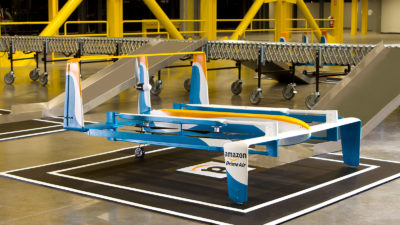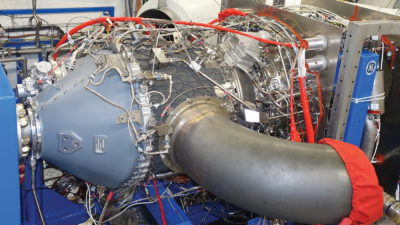Space tethers demonstrate deorbit capability
By Sven G. Bilén|December 2021
The Space Tethers Technical Committee focuses on the development and use of tether-based technology for space systems.
Tethers Unlimited Inc. of Washington and Millennium Space Systems, a Boeing company, announced in August that their Dragracer mission demonstrated rapid deorbit of a low-Earth-orbit satellite using a Terminator Tape Deorbit Module. TUI’s module unfurls a long, thin-but-wide conductive tape to accelerate orbital decay of a satellite through passive electrodynamic and aerodynamic drag interactions with the space environment. Two identical nanosatellites built by MSS were launched in November 2020 into a 500-kilometer orbit. One satellite, called Alchemy, was equipped with the Terminator Tape, and the other, Augury, had no deorbit system. Subsequent tracking of the two satellites showed that Alchemy began deorbiting rapidly soon after launch, indicating deployment of the tether, whereas Augury’s orbit decayed at a much slower rate. Alchemy reentered atmosphere in July, eight months after launch. Current estimates of Augury’s decay predict it will deorbit within eight to 10 years, depending on solar conditions.
Also in August, Finland-based Aurora Propulsion Technologies announced plans to launch a satellite to test space junk removal technologies on Rocket Lab’s Electron launcher. As part of a ride-share mission scheduled for late this year, after lifting off from Launch Complex 1 on New Zealand’s Mahia Peninsula, Electron was to deploy AuroraSat-1 into low-Earth orbit. The AuroraSat-1’s mission is to demonstrate water-based resistojet propulsion devices and “plasma brakes” that can provide propulsion and deorbiting capabilities for small satellites. The plasma brakes have a deployable microtether that interacts with charged particles in ionospheric plasma to generate significant drag to deorbit the spacecraft safely at its end of life.
With respect to component technologies for tether deorbit systems, the U.S. National Science Foundation awarded a grant to the University at Buffalo in May to explore how robotic tether systems could corral orbital debris using nets for later deorbit.
In October, the European Commission-funded Electrodynamic Tether Technology for Passive Consumable-less Deorbit Kit, or E.T.PACK, finished manufacturing its deorbit device prototype. With a volume of 12 cubesat units and a mass of 24 kilograms, the prototype consists of a module with an electron emitter and a second module with a deployment mechanism that hosts a 500-meter-long tape tether. In May, SENER Aeroespacial, the Universidad Carlos III de Madrid and Euroconsult started working on the business model for the deorbit device with funding from the European Commission.
The European Space Agency selected Universidad Carlos III de Madrid, University of Padova, Dresden University of Technology and SENER Aeroespacial to investigate consumable-less propulsion based on bare-photovoltaic tethers. Combining a bare segment with thin-film photovoltaic cells, bare-photovoltaic tethers promise to provide increased power-generation capability for tether systems and are an enabling deorbit technology that is less dependent on ambient space conditions.



































